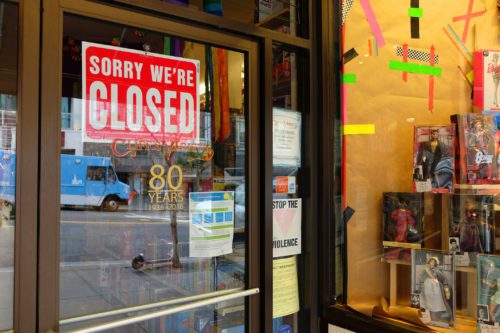San Francisco’s Storefront Vacancy Tax is Now in Effect
April 12, 2022
Downey Brand Publication
San Francisco’s Commercial Vacancy Tax Ordinance, meant to address vacant storefronts in neighborhood commercial districts, finally became effective on January 1, 2022. Although a supermajority of voters approved the tax on March 3, 2020, its implementation was delayed by the Board of Supervisors in light of negative pandemic-related effects on businesses in the City.
The purpose of the Vacancy Tax is to revitalize commercial corridors, alleviate long-term retail vacancies, and stabilize commercial rents. The “Findings and Purpose” section of the ordinance provides: “Vacant storefronts in otherwise vibrant neighborhood commercial districts degrade the urban environment and reduce the quality of life in those neighborhoods, leading to blight and crime, particularly when storefronts stay empty for extended periods of time. …[T]he resulting blight negatively impacts other small businesses in the area by discouraging foot traffic and eroding the character and uniqueness of San Francisco’s diverse neighborhoods and communities.”
The Vacancy Tax applies to ground floor, street-facing, commercial properties that are located within San Francisco’s Named Neighborhood Commercial Districts (NCDs) or Named Neighborhood Commercial Transit Districts (NCTs), as those districts existed on the date the tax was approved. The neighborhood districts are set forth in the Planning Code and include the City’s primary commercial corridors, such as Broadway, Haight, Polk, Inner Clement (NCDs), Mission, Fillmore, Valencia, and Divisadero (NCTs).
A property will be considered vacant if it is “unoccupied, uninhabited, or unused” for more than 182 days in a tax year, regardless of whether those days are consecutive. In other words, any taxable property that is left vacant for at least one-half of the tax year will be subject to the tax. Limited exceptions exist for properties subject to building or conditional use permit applications, properties recently issued building permits, properties that were severely damaged by casualty in the preceding two years, and certain leased properties that previously contained a business operating under the same lease.
The Vacancy Tax is payable by the party entitled to possession of the vacant space: the owner (if the space is not leased), the lessee (if leased but not subleased), or the sublessee. The amount of the tax depends on the length of store frontage facing a public right of way and the consecutive number of years that the space has been left vacant. The longer that a taxable property sits unused, the higher the tax. Liable owners and lessees will owe $250 per linear foot of frontage for the first year of vacancy, $500 per linear foot following two years of vacancy, and $1,000 per linear foot after three or more consecutive years of vacancy. All amounts collected under the Vacancy Tax Ordinance must be deposited in the Small Business Assistance Fund and used to assist small businesses in the City or to fund the administration of the Vacancy Tax.
Time will tell whether the Vacancy Tax achieves its stated purposes. For the time being, San Francisco landlords and business owners should be advised that vacant storefronts now have an added cost.

